10 Top California Native Plants, Trees and Grasses
These plants provide an important habitat to critters large and small, stunning seasonal colors, textures and interest in any-size garden, and are climate appropriate in dry California summers. They were chosen for their gardening ease, extreme beauty, value to wildlife, minimal maintenance and availability at nurseries, and because they are native to most regions of California.
Plant California natives in the early fall to benefit from the rainy season — they put down their roots when it’s cool and wet. Once established, they require only infrequent water during dry summers. The rule of thumb to establish water-wise California natives is to water once a week the first summer, once every two weeks the second summer, once every three weeks the third summer, and then water monthly or not at all during subsequent summers. (Not all natives are drought tolerant. Some require infrequent water and others regular water as frequently as every three days. Know the plant and its needs before buying.)
Not in California? Browse plants native to more regions of the U.S.
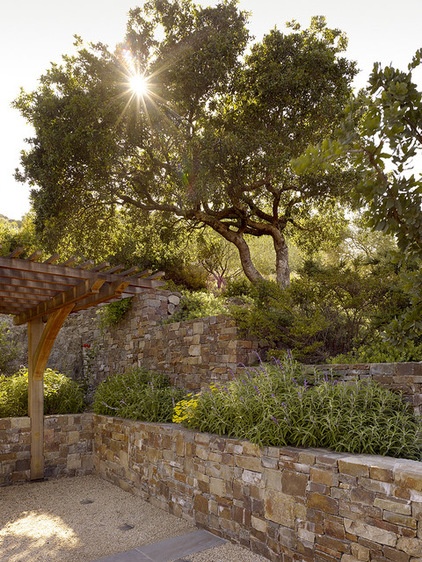
Coast Live Oak
(Quercus agrifolia)
Native from the coastal bluffs to mountain ridges in many plant communities below 5,000 feet, Mendocino County south to Baja California and the Santa Cruz and Santa Rosa islands
With their large, shady canopies, pollen-laden catkins and desirable acorns, California oaks provide more food and habitat for wildlife than any other native plant. They provide food and shelter to a plethora of birds, deer, mammals, butterflies and pollinators.
Due to their susceptibility to oak root fungus, native oaks are intolerant of summer water and prefer to be planted in a naturalist setting where they won’t receive irrigation during the dry season. Coast live oaks look best and are happiest with other drought-tolerant native plants, like manzanita, ceanothus, hummingbird sage, barberry, pitcher sage, coffeeberry and currants, to name a few.
Plant a heritage oak tree this fall that will provide a habitat and beauty for multiple generations to come.
See how to grow coast live oak
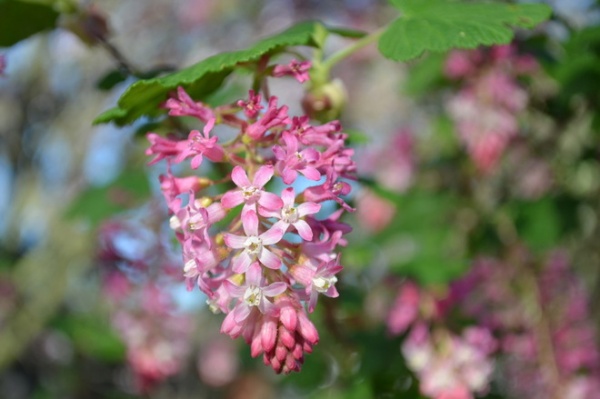
Pink-Flowering Currant
(Ribes sangineum)
Native to open slopes, chaparral and moist woodlands from Oregon to Santa Barbara. In gardens it grows well in all geographic zones except deserts and high mountains.
Pink-flowering currant is a deciduous shrub with spectacular flower tassels emerging from late winter to early spring. It attracts pollinators and hummingbirds while in bloom and birds once its berries are ripe. Growing to about 5 feet tall in a vase or rounded shape, pink-flowering currant can solve that narrow-bed problem. It can also be used in the middle to the back of a mixed border planting.
It performs well with many other dry-shade natives under evergreen or deciduous trees, where it lends its woodland sensibility. Plant it where it will get full sun if on the coast or morning sun and afternoon shade in other geographic zones. Pink-flowering currant looks best with some supplemental water during the dry season. Cultivars are plentiful, each selected for their particularly lovely flowers.
See how to grow pink-flowering currant
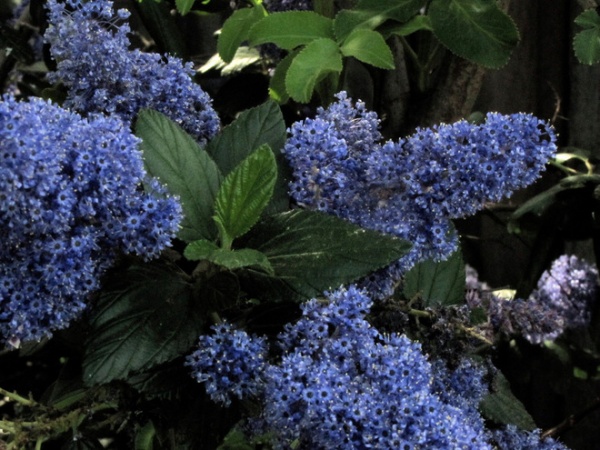
California Lilac
(Ceanothus spp)
Native to dry ridges and slopes in many plant communities below 10,000 feet across North America, from southern Canada to Guatemala
Amazing blue flowers covered in pollinators brighten the garden in the spring, while the dark evergreen foliage is rich green throughout the year. There are a number for species, cultivars and hybrids of California lilac to choose from, including ground covers, medium-size shrubs, large shrubs and extra-large shrubs. Some can even be espaliered or trained into a small tree.
Plant California lilac where it won’t receive summer irrigation after it’s established to extend its life beyond five or 10 years.
See how to grow ceanothus
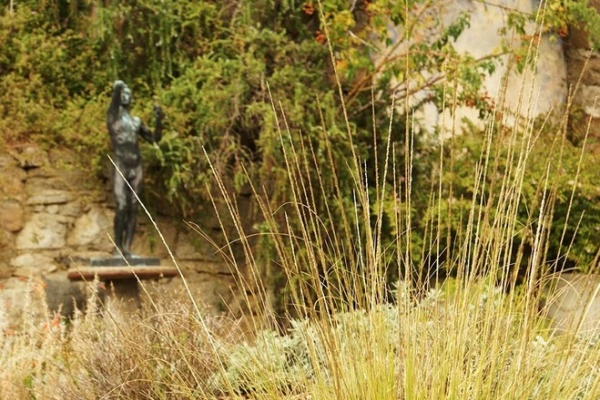
Deer Grass
(Muhlenbergia rigens)
Native to most of California — except the northwestern region and the northern and central coast ranges — into Texas and Mexico
A tough and tawny workhorse of the garden, deer grass fills in quickly to provide a sense of drama. Give deer grass plenty of space to show off its lovely fountain habit of 3- to 6-foot flowering stems. It’s a beauty to behold as the stems gently sway in the breeze.
Deer grass is adaptable to different kinds and amounts of soil, light (sun to partial shade) and water (drought tolerant to moderate water), making it a go-to plant for many situations. Native grasses are important to butterflies as host plants and to birds, mammals and insects due to bountiful seeds.
See how to grow deer grass
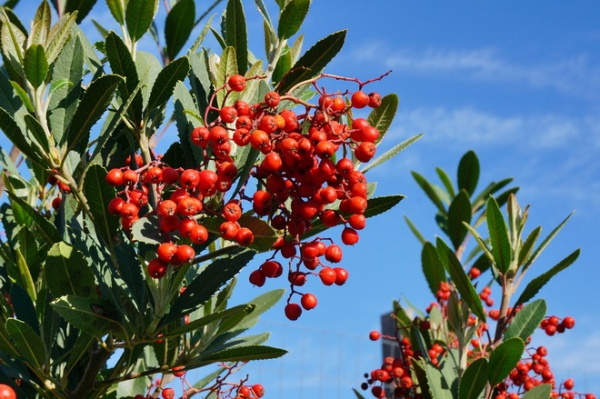
Toyon
(Heteromeles arbutifolia)
Native in chaparral, coastal sage scrub, mixed-evergreen forests, northern coastal sage scrub and central oak woodlands in many regions of California
Toyon is most beloved for its evergreen foliage and red holly-like berries in the winter, but I also adore its spring bouquet of large clusters of tiny flowers. Toyon is habitat central for odd-looking pollinators in the spring and for birds in winter through spring.
Plant Toyon as a background shrub or small tree to show off any of the many gray California native species you might plant in front of it. A bit slow and weak-looking in its youth, it will mature to a healthy, full 8 to 15 feet tall and wide. It’s adaptable to sun or partial shade and occasional to no extra water.
See how to grow Toyon
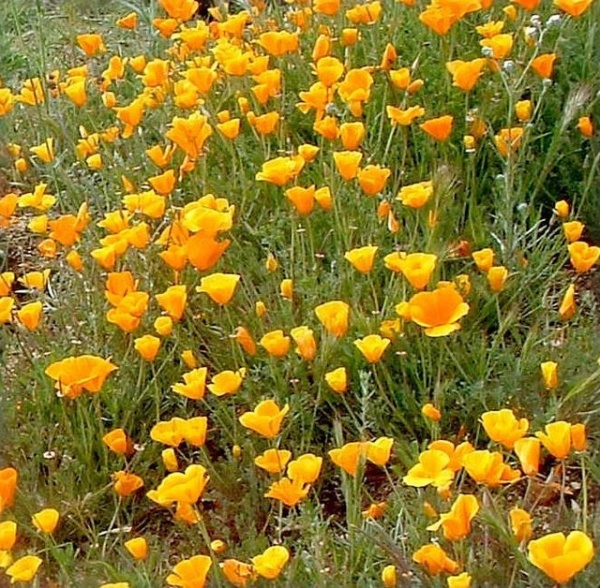
California Poppy
(Eschscholzia californica)
Native to open areas in grasslands, and chaparral and woodlands, from the California Floristic Province to southern Washington, Nevada and New Mexico
Our well-known state poppies wave in the wind, attracting pollinators who literally roll with joy in the bright cups of pollen — while its quintessential color proudly shouts “California.”
Annuals are particularly helpful in a young garden. They fill in spaces, brighten corners and draw wildlife into the garden. As the garden matures, the trees, shrubs and ground covers get larger and annuals are pushed out. In my garden I maintain some small areas where I can continue to enjoy the exuberance of annuals. Plant poppies where you don’t mind them spreading by seed. They are highly successful, so you will find them moving themselves from the backyard to the front yard or anywhere there is space for them. Some consider them weedy, so use discretion when planting.
See how to grow California poppy
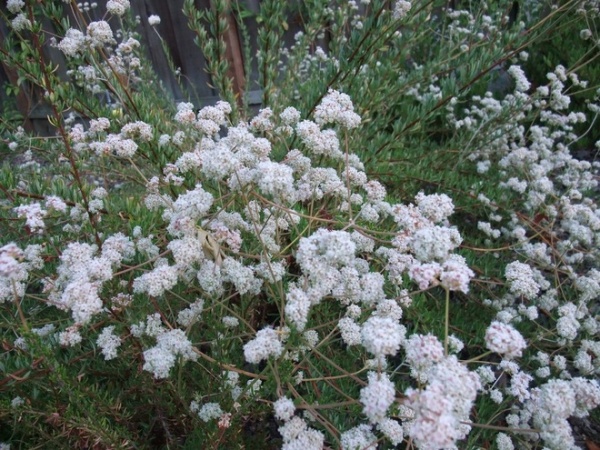
California Buckwheat
(Eriogonum fasciculatum)
Native to dry slopes and canyons in coastal scrub, chaparral, desert woodlands and desert scrub below 8,000 feet, Alameda County south to northwestern Baja California and east to southwestern Utah and Arizona
The large clusters of delicate white summer flowers of California buckwheat call all the pollinators to the party. Plant it where you can watch the show.
California buckwheat is adaptable to different kinds and amounts of soil, light (full sun to partial shade) and water (drought tolerant to occasional water). It grows about 3 feet tall and 3 to 6 feet wide. Either give it space to show off its beautiful rounded-mound form or plant it in drifts for effect.
See how to grow California buckwheat
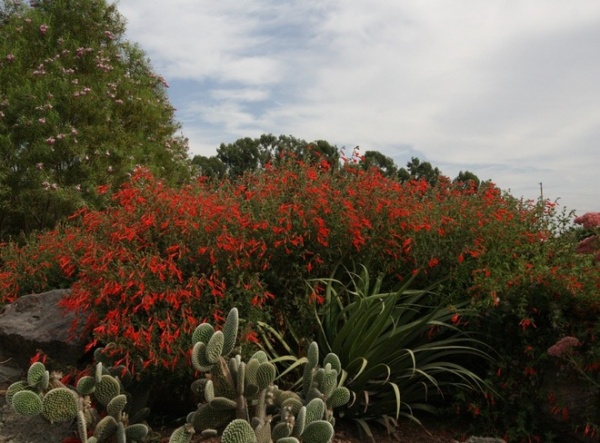
California Fuchsia
(Epilobium canum, or Zauschneria californica)
Native to rocky areas and sunny, dry slopes in many plant communities below 10,000 feet, from the California Floristic Province to Oregon, Wyoming, New Mexico and northern Mexico
Hummingbirds adore the red tubular flowers of California fuchsia. Their antics while fighting over just a few plants will bring joy to your heart. California fuchsia is a welcome delight in the summer when little else is blooming.
California fuchsia’s habit of spreading by rhizomes — often aggressively — must be considered when choosing a location for it. Plant it in drifts where it can spread to its heart content, then enjoy the gregarious summer blooms and hummingbird aeronautics. Adaptable to different light (full sun to partial shade), soil and water (drought tolerant to occasional water), California fuchsia is a must for any California garden.
See how to grow California fuchsia
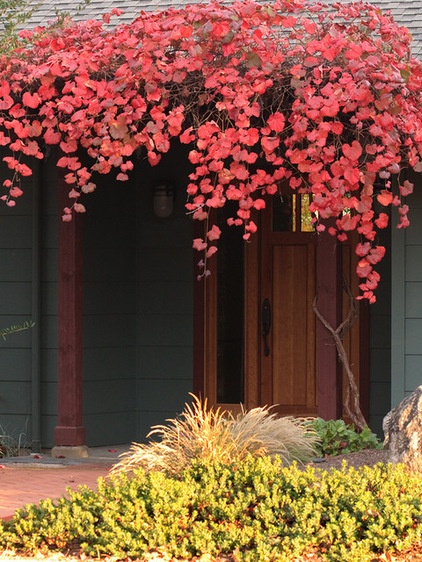
California Wild Grape
(Vitis californica)
Native to stream banks and canyons in riparian woodlands below 4,000 feet, western foothills and the east side of the Sierra Nevada, the Central Valley and coast ranges to southern Oregon
This plant provides year-round interest: bright green new foliage and tiny flowers in the spring, early-summer green fruit to late-summer deep red (ripe) grapes and full foliage, vibrant foliage in the fall and gnarled naked vines in the winter. Grape is a host plant for our beloved hummingbird moth — aka the white-lined sphinx moth — while the naturally sun-dried “raisins” provide food for birds.
Although it prefers some water, California wild grape is drought tolerant once it’s established. Growing up to 40 feet in length, it can easily be contained with proper pruning. In my garden it’s pruned to about 16 feet wide.
See how to grow California wild grape
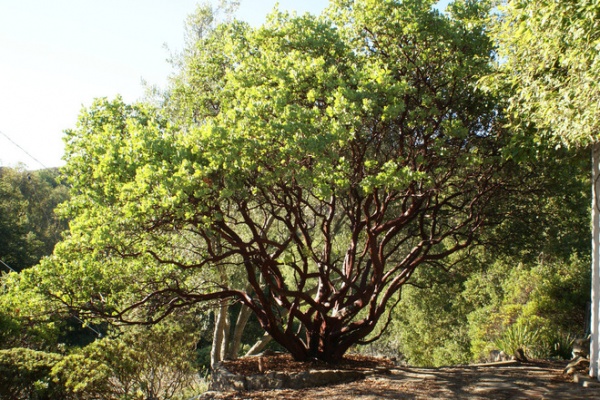
Parry Manzanita
(Arctostaphylos manzanita)
Native to California chaparral, grasslands and woodlands from Mount Diablo north to Humboldt and Shasta counties. As with many manzanita species, in gardens Parry manzanita will perform well in all zones except deserts and high mountains.
Manzanitas are terrific evergreen natives that can withstand even the hottest summers. Then in late winter to early spring — when nearly everything else is dormant — clusters of delicate white urn-shaped flowers erupt to provide generous nectar for hummingbirds, butterflies and pollinators. The small apple-like fruits are enjoyed by birds and people — manzanita cider is quite tasty.
Parry manzanita will grow slowly to 10 to 12 feet tall and wide. The most distinctive characteristic of tree manzanitas is the rich, deep red bark on sculptural branches. The foliage of Parry manzanita varies from whitish to blue-green, olive green or dark green. Two available and reliable cultivars are ‘Dr. Hurd’ and ‘St. Helena’.
Use Parry manzanita as a dramatic single specimen. Plant it on a sunny, well-drained slope or mound where it will get infrequent to no summer water once established.
More: Browse plants native to your region












